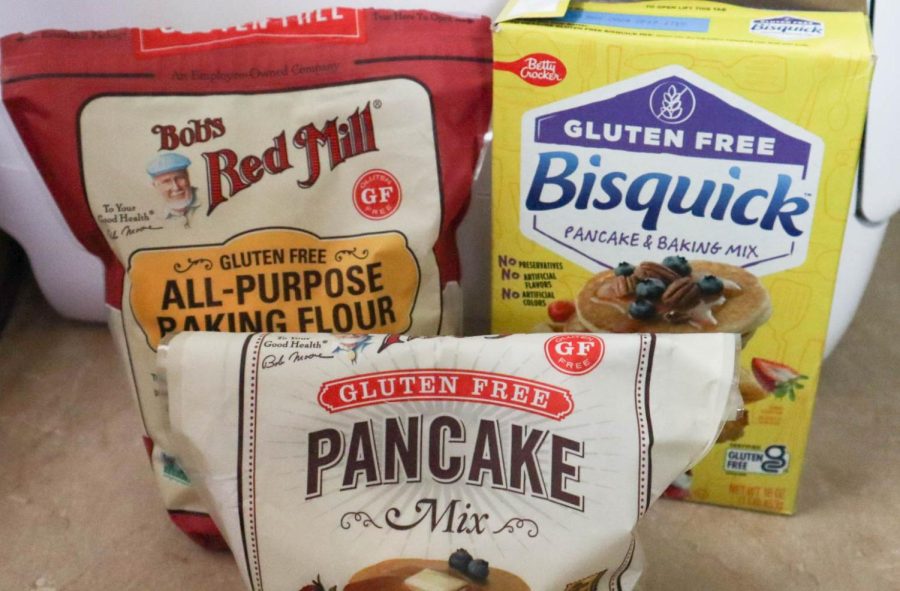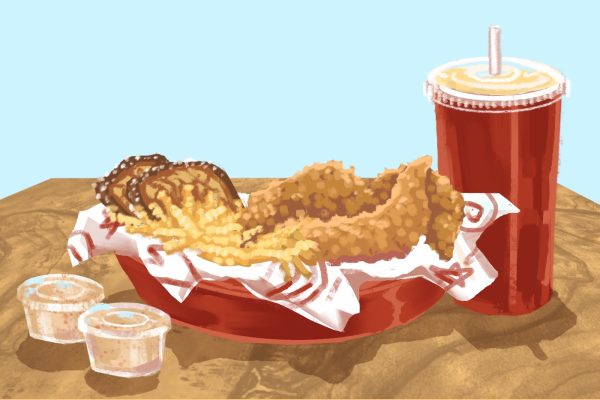OPINION: A look at celiac disease through the eyes of a daughter
Gluten-free products
Celiac disease, a disease more prevalent than peanut allergies, can uproot someone’s life, mainly depending on how early or late the disease is diagnosed, if it is at all.
I learned about this firsthand as my mom was diagnosed with the disease in May 2023 and had to go on a strict gluten-free diet.
Celiac disease is a chronic digestive disorder and auto-immune disease that damages the small intestine when triggered by gluten.
The disease affects 1 in 100 people worldwide, but the disease can go undiagnosed and cause life-threatening issues such as Non-Hodgkin’s lymphoma.
My mom was thankfully diagnosed at the age of 44, which is still young, and she was diagnosed at a time where there are plenty of gluten-free alternatives.
But there are many downsides to having celiac disease, the biggest being that my mom can’t eat certain foods at restaurants, even if they have gluten-free options, because of the risk of cross-contamination.
While having the disease is physically damaging, it can also affect someone mentally and emotionally.
There are countless times where I have been to events with my mom and she was offered something, like a cookie, and she’s had to turn it down because of it.
Whenever we do go out to eat, she has to explain that she’s not asking for gluten-free alternatives for dietary reasons or to be “trendy.”
What really frustrates me are places, such as bakeries, that make gluten-free sweets but make them on the same machines as items with gluten but still mark them as gluten-free.
The gluten-free diet trend is a double-edged sword. Because of it, there are more gluten-free products on the market, but I also feel that places should not advertise products as gluten-free unless they are made in a separate facility.
Legally, businesses do have to tell individuals that their products are made on the same machines or in the same facility, but at that point, it’s not gluten-free.
Another issue I have seen with my mom since she’s been diagnosed is grocery shopping. Grocery shopping can take a while, that’s a given, but it becomes exponentially longer when you have to look at every ingredient.
Certain foods that people don’t usually think of have gluten in them, like yeast extract, caramel color and modified food starch.
Caramel color depends on the food because it can have gluten, but it can have dairy in it as well. Modified food starch is a vague term because it can be made with corn, wheat or any other type of grain on the market.
Now, there are foods that do list on the ingredients if it is a specifically modified starch like corn or wheat, but unless the box or container has a symbol on there that says it’s gluten-free, then we can’t know for sure.
Last thing I want to touch on is the health care aspect of having this disease. It’s highly recommended that people with celiac see a dietitian to help them with meal planning and other ways to help them with their disease because people with Celiac Disease have a higher chance of malnutrition.
Celiac disease is not talked about enough, and if you’re someone that thinks celiac isn’t “real” or having to go on a gluten-free diet is a “choice,” please do your research.

Jacinda Hall was a reporter for The Sunflower. Hall previously served as a podcast editor and is a senior majoring in journalism and media production with...









